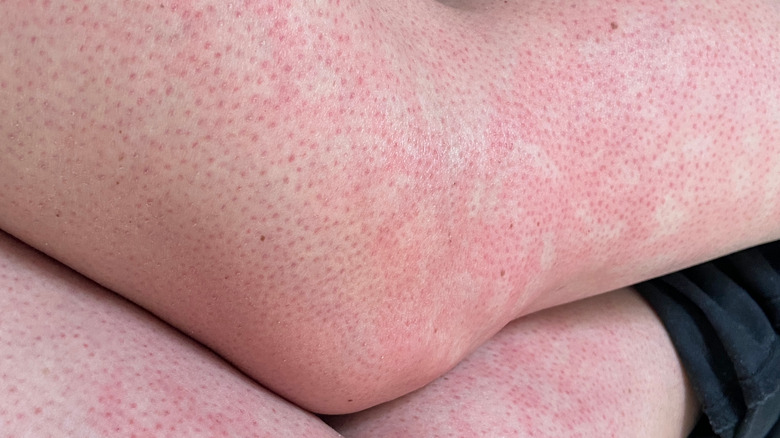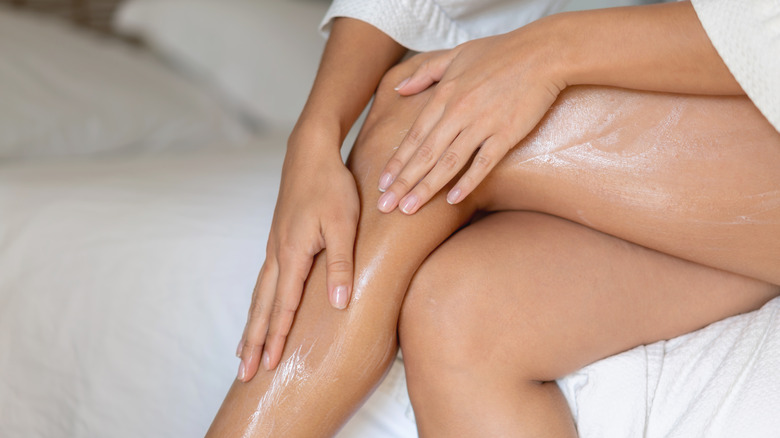These Everyday Items Could Be Giving You Toasted Skin Syndrome - Here's What To Know
From the lamp we use at our bedside at night to the pot we use to brew our coffee during the day, the technological inventions that surround us have meshed into our lives with ease. Due to our frequent use of them, rarely do we take a second to appreciate how these items have uncomplicated many facets of our daily lives. As a result, we also don't consider the harmful implications they can bring.
Toasted skin syndrome is not a new discovery, but the modern inventions we use daily can cause it. Technically known as erythema ab igne, which means "redness from fire" in Latin, toasted skin syndrome gives off symptoms of skin discoloration, itching, and burning. The syndrome is dissimilar to a chemical burn – it's caused by extended exposure to moderate sources of heat, like a heated car seat or sauna belt.
The syndrome appears as a blotchy, brown- and red-pigmented rash that causes stinging and mild burning. Toasted skin syndrome can easily be treated, but knowing how to prevent it can save you the pain of experiencing it.
What items can cause toasted skin syndrome?
Toasted skin syndrome is caused by mild heat that falls somewhere between the 109.4 to 116.6 Fahrenheit range. Everyday items like a space heater or heated blanket can result in the rash. One of the most common culprits of toasted skin syndrome? Your laptop. Outside of things like neck and back problems, a heated rash is one of a few things that occur when you use a laptop on your lap.
The increasing heat of a warm laptop's battery and vent can give way to toasted skin syndrome when set onto bare skin. To avoid this, place it on a desk or table when you're using it. If you can't break the habit of using it on top of your legs, place a pillow or blanket on your lap to create a barrier between the heat and your skin.
Another source of toasted skin syndrome can be a space heater you're sitting too close to. Even if it's not directly touching your skin, staying about two feet away from it can prevent the rash. The same goes for ovens and stoves, which are surprising culprits. Avoid standing around them for extended periods of time when cooking. As for heated blankets or hot water bottles, shift them around every so often and try to avoid them staying on the skin for too long.
How to treat toasted skin syndrome
If you start to feel a burning or itching sensation on your skin, remove the heat source from your skin or proximity as soon as possible. To soothe the burn, you can apply aloe vera to get rid of that painful, inflamed feeling. You can also press a cold washcloth to the area or take a cold or lukewarm bath for immediate relief. For itching that persists, a colloidal oatmeal bath can help alleviate it. Lower the temperature in the house and wear lightweight, breathable clothing that won't aggravate your rash.
If you're experiencing any lingering pain from the burn, pain medicine like Tylenol or Ibuprofen should do the trick. For the rash, using a hydrocortisone cream once or twice a day should eventually fade it away. Afterward, the area might still have hyperpigmentation as a result. Wear sunscreen when exposed to the sun and apply gentle ingredients like azelaic acid that will help to fade discoloration.


